Why Great Thought Leaders Don’t Play the Publisher’s Game Peter talks with publishing expert Ken…
The Power of Women’s Stories in Tech | Miri Rodriguez
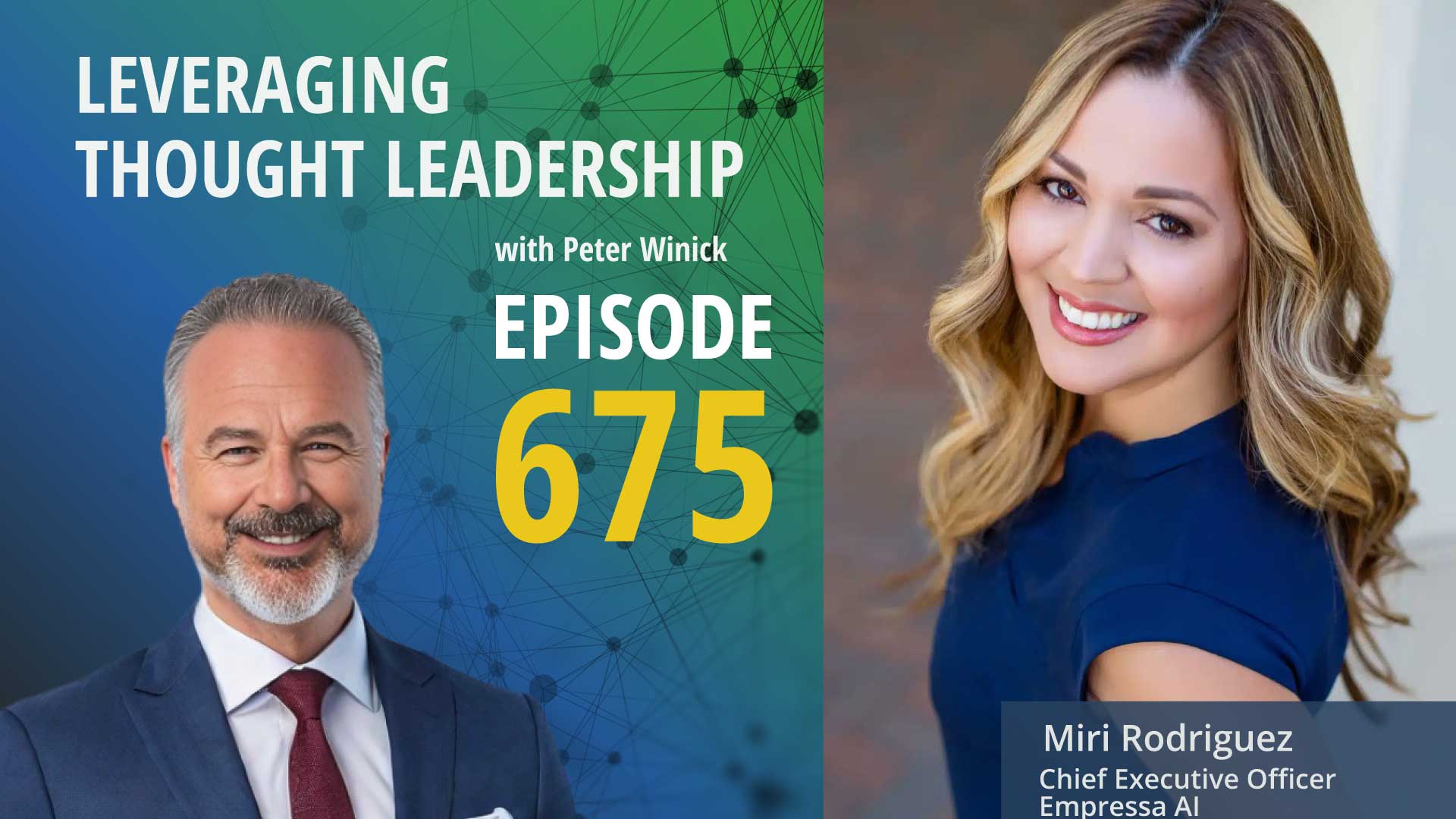
Building Brand Love Through Storytelling
This episode explores how storytelling can drive inclusion, purpose, and emotional connection in business. It examines how mission-driven narratives can shape brand loyalty and cultural impact far beyond metrics. The conversation highlights the power of sharing authentic stories to inspire others and preserve underrepresented voices in the history of innovation.
What happens when a storyteller from Microsoft turns her lens on the women shaping technology’s past, present, and future?
Today on Leveraging Thought Leadership, Peter Winick sits down with Miri Rodriguez, CEO of Empressa AI, best-selling author, storyteller at Microsoft, and co-author of The Women of Microsoft (Wiley). Miri reveals how a simple Teams message from a colleague in Poland sparked a global collaboration — uniting 50 women from across cultures, career levels, and disciplines to tell their stories of innovation, resilience, and purpose.
Miri’s thought leadership centers on mission-driven storytelling — using narrative as a strategic tool for inclusion and brand love. She shares how metrics like “brand love” go beyond data to measure emotional impact, connection, and loyalty. Her goal isn’t just to celebrate women at Microsoft, but to ensure their contributions are recorded in the technological history being written right now.
She challenges leaders to think beyond traditional boundaries of thought leadership inside corporations. For Miri, there’s no dividing line between personal purpose and professional platform — every story she tells aligns with her mission to empower women’s voices. Her journey demonstrates how clarity of purpose can attract the right opportunities and how a clear mission can transform your work into a force multiplier.
This conversation is a masterclass in how to use storytelling as strategy — to inspire action, build communities, and leave a lasting mark on the narrative of innovation.
Three Key Takeaways
- Mission-driven storytelling creates lasting impact — when your message aligns with a clear purpose, it naturally attracts opportunities and amplifies your influence.
- Emotional connection is a powerful metric — concepts like “brand love” show that loyalty and inspiration can be measured through human connection, not just numbers.
- Authentic voices shape the future — sharing real stories, especially from underrepresented groups, ensures that innovation and progress include every perspective.
If you were struck by the power of storytelling, emotional connection, and mission-driven leadership in this episode, the conversation with Jenna Fisher will take you deeper into those same themes in a corporate leadership setting. In her interview, you’ll hear how she interviewed dozens of women leaders to uncover the real barriers and strategies for rising to the top, even when the rules seem stacked against you. Listen next to discover how to merge narrative, metrics, and career strategy into a playbook for women (and all leaders) to advance influence, voice, and impact.
Listen now: “Women in Corporate Leadership”
Transcript
Peter Winick And welcome, welcome, this is Peter Winick, I’m the founder and CEO at Thought Leadership Leverage and you’re joining us on the podcast today, which is Leveraging Thought Leadership. Today, my guest is Miri Rodriguez, she’s got a new book out, although most people don’t come out with an old book, but I guess that’s what we say. It’s called The Women of Microsoft, published by Wiley. She is a bestselling author. She runs a group called Be Mindful, Be Happy, and she is a storyteller of Microsoft but don’t let her tell her own story. So welcome, Mary. How are you?
Miri Rodriguez Hi, Peter. I’m excited to be here. Thank you for having me.
Peter Winick So give me the, this is a little meta, but getting a storyteller to tell me the story, right? How did this book come to be?
Miri Rodriguez Yeah, yeah, the story is, you know, in celebration of Microsoft’s 50th anniversary, which happened this April, this past April. And I was reached by a woman in Poland had never met before. She also works at Microsoft and I love, I love the story behind the story because it was exactly about those kinds of connections that technology is able to bring together women from across the world that never met. He reached out on Teams. I was like, Hey, I’m thinking of writing this book. I know you’ve written a couple of books, so she wanted to get my perspective. And by the end of the call, she asked me to co-write with her. And I couldn’t say no. I was a little bit, I was like, Oh no, I know another book. But I, I, was excited because it is a compilation of 50 women across cultures, uh, past and present across the functions of the company. So different business functions across career stages, early in career, all the way to VP. All of us really telling. Our own stories, our individual stories of our navigation of tech as an industry of Microsoft as a company and of life at large. So it’s a tapestry of all the stories and it’s inspirational for women all across the board.
Peter Winick I love that. So when you talk about I couldn’t say no, I actually hear that a lot, right? I mean, you think about, you know, when someone, well, why did you do, you know you’re busy with this, you’re that, or why did this, the book, or why do you do this? And I think in most businesses, and thought leadership is really different when someone I couldn’t say no. They made me an offer I couldn’t, it’s usually intrinsic, right. No, I’m sorry, it’s extrinsic. It’s usually, well I couldn’t say no. It’s usually extrinsic, right? So it’s usually the money, promotion, the prestige, the title, whatever. But my sense is pushed back, if I’m not reading the tea leaves right, that your, I couldn’t say no was more of an intrinsic, I-couldn’t-say-no.
Miri Rodriguez A hundred percent, it was a very mission. Yes, a hundred percent. Um, I couldn’t say no because of the mission behind this project, uh, which I understood immediately to be it’s mission driven in the way that women show up in history, which a lot of times we have not, there’s been erasure of our presence of our collaboration of our contributions many times over in history. And, and when we read history books, We don’t find women, we don’t find how they’ve contributed to technology or science or education. And to me, this very particular moment, the 50th anniversary of Microsoft, marking five decades of technology and then entering an era of the eye at the same time, which will inevitably change 50 years from now, how we do life. It was really important for me to capture those stories of those women so that when we look back in history, their stories are embedded into. What happened in that time, what happened in that era and beyond that.
Peter Winick All right. So most businesses, I would say all businesses today, focus on metrics, right? They’ve got their organization metrics that trickles down to your personal metrics, product metrics, whatever the case may be, you come from that world, right? You come from the software tech world, et cetera, but this is a little bit different, but it doesn’t mean you get a free pass and say, well, there’s no metrics, but what are they? And some might be a little swishier, but how would you say if we were to in a year from now. And say, let’s look at some of the metrics and see if we achieved our objectives. How are you thinking about that?
Miri Rodriguez Yeah, you know, it’s funny at Microsoft, we do have a metric called brand love and it’s beyond the numbers. It’s beyond, uh, you the sales numbers or the KPIs are specifically data percentages. It’s, they’re really about this loyalty that people have to the brand because they love it because they fall in love with it. And so for me, when I think about the, the success of the book, it really, what it’s meant to do is inspire women across the board, not just in tech industry. To speak their stories, to speak the truth for so long, we have not had platforms to do this and we shied away when we do. And so for me is, I’m already getting emails, accounts of women saying, thank you so much. This is so inspiring. I feel inspired to tell my own story. I just had a call earlier this morning with somebody say, hey, I wanna write a book now. I read the book, I want to write a. Really inspiring women to come out of their shells. I had a man say, I’m a girl dad, I want my girls to read the book so they can understand how powerful it is to stand in your own voice and speak your own truth. So that to me, when I look a year from now, what we see here,
Peter Winick Yeah. Because even that sharing piece, I think there’s different levels or layers of that. So 10 years ago, whenever it was when Sandberg came out with the circles and all that, it was sort of a closed sharing, if you will, right? Come up with your people in the community, share there. And I think that’s sort of one level of sharing. But I feel like you want to push that a little bit in terms of saying, don’t just share with other women. That’s an important thing to do. But share with your team share with you or share with your is that.
Miri Rodriguez Oh, a hundred percent. It’s share with your network, share with people. You don’t know that it speaks to you that you know, they need it. I mean, this is a, this a 50 stories that you will find each individually in their own power, telling you something that you didn’t know before about the women that have sat in this incredible company, this, this is a once, you know we’ve never done this before. And to me it’s the sharing it’s unfortunate suppliers, not sharing one, once one piece of wisdom, one piece. You know, advice is 50 from different angles, different perspectives of different parts of the world.
Peter Winick If you’re enjoying this episode of Leveraging Thought Leadership, please make sure to subscribe. If you’d like to help spread the word about our podcast, please leave a five-star review at ratethispodcast.com/LTL. share it with your friends. We’re available on Apple Podcasts and on all major listening apps, as well as at thoughtleadershipleverage.com/podcast.
Peter Winick And of those 50, and maybe it’s too early to tell and that’s fine, are there a couple that are bubbling up to the top of saying, wow, for some reason people are really resonating with so-and-so’s story. I would have thought it might’ve been this story. You seeing any of that? Cause I find it’s interesting when you do something to the wild. Yeah, yeah, yeah. So yeah, tell me. Makeup.
Miri Rodriguez We are aware there’s a story about a woman who is actually right now in your brain and she, it tells her perspective from being in the war, in the middle of war, having to wake up and talk, you know, get her kids out of bed and to go to school and live a somewhat normal life and go to work in the middle of this situation that she is living in her country. As she’s being asked, you know, why, why did you choose to stay? Why have you not left? And she’s like, this is my country. I wanna be here. I’m hoping this ends. And so it’s we forget a lot of times we forget that there’s people right now right now living horrific, horrific situations yet they have to get up and act you know, like everything is okay, like mom is mom and mom takes me to school and the kids have to go to school. And So that’s resonating a lot. I think it’s important to understand the globalization that we live in today that we’re not far removed from things happening all across the world and not just across the pond. And I think that’s important. Another one is, of course, Basu. She is the VP of security at Microsoft. So she already brings a huge platform with her. She’s an incredible leader. So the minute she puts something out, everybody responds. And I think it’s really, right now, particularly important because we are in the era of AI. People are looking at Microsoft in terms of security as a technology because that’s very much part of the era. So she brings in with her own platform, a lot of audiences looking into the book and saying, Oh, this is interesting that… Might, you know, that these Microsoft women are talking about their personal stories.
Peter Winick So tell me a little bit, I, I encounter people all the time in my work that have something they want to say, something that either to monarchize it, have impact, whatever the, the underlying drivers are. And they’ve got, you know, a job at a big company and they have to wrestle with the issue of where does this fit? And I think about that on a continuum from, well, this is a side hustle. This is a nights and weekend thing. This could be part of my job, right? If I’m out there speaking about this, it’s actually good for me, good for the company. You, I’m a company spokesperson. How did you sort of thread that needle?
Miri Rodriguez So I’ll say I’m not a company spokesperson. So I will tell you, this is a disclosure. I am not, you know, I am acting as an independent writer, but I am at Microsoft. I am an employee. I think to answer your question, this is from a mission-driven perspective, everything does intertwine if you have a specific mission. And for me, my mission and my career has been led through this mission of empowering women and their voices and their stories. I am a storyteller. Outside of Microsoft as I am inside of Microsoft. I have connected with women across the entire world for 20 years, I have coached them, I have talked about them, I haven’t passed. So it’s not one or the other, it’s this and that and that, and that it all comes into this bubble of mission driven approach. And for me particularly, yes, it does intertwine. I can’t, I don’t divorce one aspect of me to commit, come in at Microsoft and do this one thing. Of the women that I connected at Microsoft, I mean, women that have met or not met, but I’ve known for someone else. So it’s one big tapestry of a puzzle.
Peter Winick There’s someone, if someone’s out there and they’re thinking about this now. Yeah. Once you knew this was becoming a thing that you had to do. Yeah. How did you address now the 50th anniversary is interesting. Just coincidentally, cause I, I, you know, I would imagine if it was the 43rd anniversary, you would have found another reason to make it timely. Right? Like that’s just kind of word. How did you approach whether your boss or the powers that be to say, Hey, this is a thing and I’m, I want to do this. And not that they, they give you a pass on your, your job very well, but how do I do this effectively?
Miri Rodriguez Right, so back to the mission driven approach, when I speak to my managers, when I speak, to people that know me or that I am speaking about my next steps in my career inside and outside Microsoft, they know what my mission is. They know what I’m about. So I won’t take a job, for example, that doesn’t align to my mission. I just won’t. I won’t And I won’t take a, you know, or I’ve taken jobs that are lateral just because they am aligned with my mission and I think there’s an expansion of what I want to do next. It’s so when you come in you say. I am about women empowerment. I’m about delivering voices. I’m, about inclusion. I’m above all these things. People already know that and what they offer you. It’s almost like an, like a platform expander that offer you that opportunity. So it’s not about, like you said, asking permission is about saying, Hey, this really aligns with what I’m already, I’m already doing this book. It’s just, it just makes sense. It’s, just part of what I already see.
Peter Winick So that’s interesting because if you were to say a programmer and there’s no history in your career to say, why should I be talking about agility or reason, whatever your thing is, but your background said, of course, to do this. Look at the roles I’ve taken. Look at my, so your, your track record, your, your opportunities that you took and opportunities that you didn’t take are so much aligned to this thinking that it would almost be like, we were waiting for this conference.
Miri Rodriguez Absolutely, it makes sense. That’s why you can’t say no, you know, it just comes it comes to you at there’s some points that I get there’s I think and I do believe in the universe bringing aligning to your perspective when you’re in so aligned with yourself it’s just the universe comes and throws these things at you here’s a book go write it okay great I might go do that you know and like my company and press.ai that’s another part of that I you know I’m building a company that is actually a Microsoft partner. I’m a Microsoft employee and partner right now I’m doing this for women and so they know that they know this about me and it just it’s just part of who I am I’m just continuing to create channels of external and internal channels of where my mission can go and this is just one of them.
Peter Winick I want to touch on something you said there in terms of, and I’ve seen this with others before, where the definition or the roles evolve over time. So I’ve had clients that have been employee of company X, already as thought leaders evolved where their company becomes their first client or research partner or whatever. So I think that’s, you know, another important way to think that the world isn’t so binary, right? Relationships could evolve change. All the time, whatever. And, and you have to think about, think about it in that standpoint. All right. As, as we, as, we start to wrap here, any final thoughts or pearls of wisdom to drop on folks that are where you might have been say two, three years ago in this process.
Miri Rodriguez Yeah, where I was, it was two years ago. I’ll say this. And I think for everyone who thinks about thought leadership, we think of it. It’s a multifaceted approach to how we enter business and life together. I think it’s a, it’s right. It’s, you know, you don’t, you, you do both. You’re always doing both and you’re in, you’re intertwining the journey. My pearls of wisdom is, you know, what, once you hit this space where you know exactly what you are about, you’ve tested different things. As an entrepreneur, as a business person, as a career, you’ve tested, but you got to a place where you know this is it, this is your sweet spot. That is where you hone down to then, to then make it a force multiplier and it begins to compile. It begins to compiled. So if you stay a lot of, I was going to say a lot.
Peter Winick That sweet spot meaning, I just want to clarify the sweet spot piece is really about the idea and the platform because it’s hard to do this if you’re like a lot of people where you’ve got 10 ideas and every time I talk to you, you’ve got another thing and another thing and another think. You’ve got to get that laser focus. Exactly.
Miri Rodriguez No, I was going to say, and this is something like, okay, I was gonna say, this is why something like a book project no longer seems so big, because it just aligns to what you’re already doing. It’s just part of it. And so it’s not this is dissonant to your pro to who you are. It is part of who you are. Anything else comes along. It, it’s like that. Yeah.
Peter Winick Fantastic. This has been great. I wish you the best of luck with the continued success of the launch and the book and all the other things. So thank you so much.
Peter Winick To learn more about Thought Leadership Leverage, please visit our website at thoughtleadershipleverage.com. To reach me directly, feel free to email me at peter at thoughtleadershipleverage.com, and please subscribe to Leveraging Thought Leadership on iTunes or your favorite podcast app to get your weekly episode automatically.


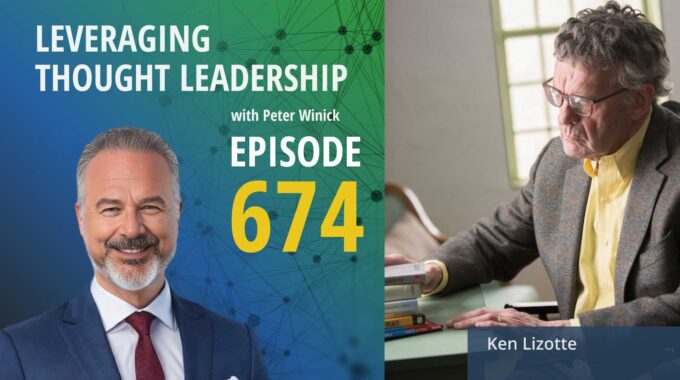
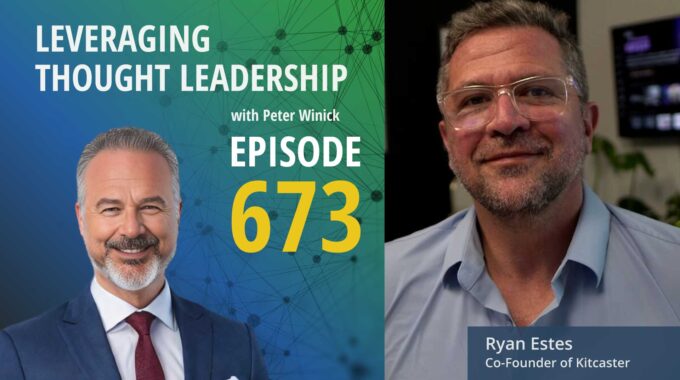
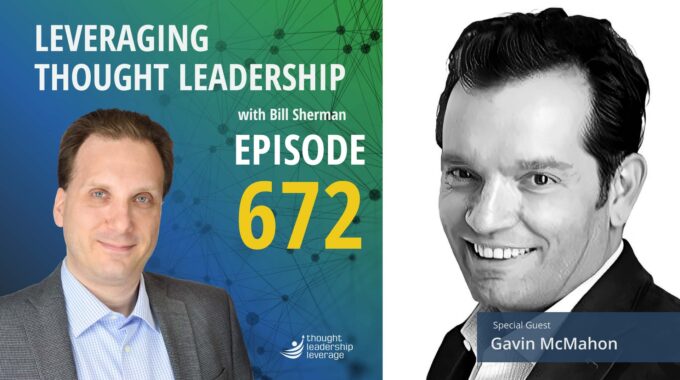
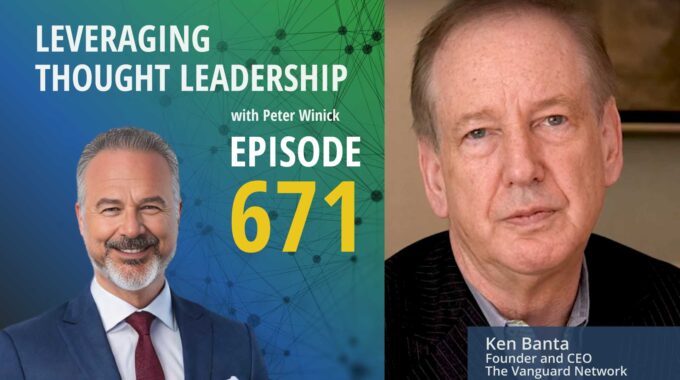
Comments (0)